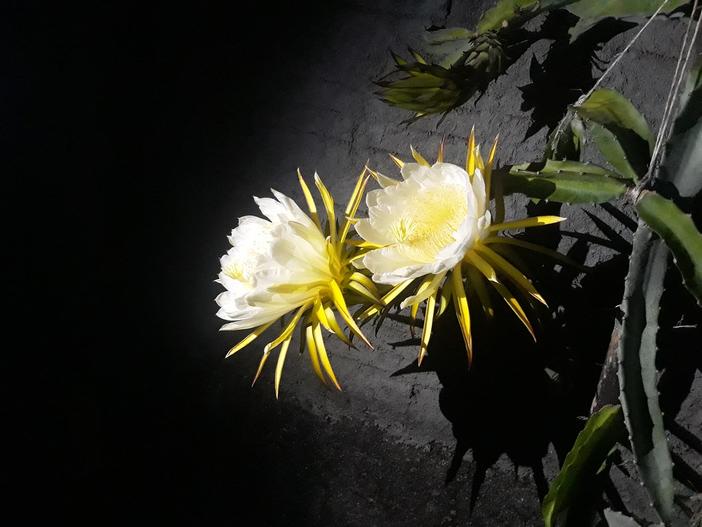Costa Rican Pitahaya
(Selenicereus costaricensis)
Costa Rican Pitahaya (Selenicereus costaricensis)
/
/

Caio César Dumaresq Nobre
CC0 1.0
Image By:
Caio César Dumaresq Nobre
Recorded By:
Copyright:
CC0 1.0
Copyright Notice:
Photo by: Caio César Dumaresq Nobre | License Type: CC0 1.0 | License URL: https://creativecommons.org/publicdomain/zero/1.0/ | Uploader: caiocesardumaresq | Publisher: Flickr















Estimated Native Range
Summary
Selenicereus costaricensis, commonly known as Costa Rican pitahaya or Costa Rica nightblooming cactus, is a fast-growing, epiphytic or lithophytic vine native to the tropical rainforests of Central America, where it thrives in warm and humid conditions, often climbing on trees or rocks. This species is particularly noted for its large, nocturnal white flowers that can reach up to 30 cm in diameter, blooming in summer or autumn and lasting only a single night. The flowers are exceptionally showy, with a sweet fragrance that attracts nocturnal pollinators such as bats. After flowering, it produces an edible fruit known as pitaya or dragon fruit, which is oval, red-skinned with prominent scales, and contains sweet, red or white flesh peppered with small black seeds.
The Costa Rican pitahaya is valued both for its ornamental qualities and its fruit. In cultivation, it is grown for its impressive flowers and delicious fruit, which has gained popularity worldwide for its nutritional benefits. It is suitable for growing on trellises, against walls, or in hanging baskets. While it prefers a compost rich in humus and consistent moisture during the summer, it is drought-tolerant once established. It should be protected from temperatures below 10 °C (50 °F) in winter. Providing extra light in early spring can encourage budding. It is generally pest-free but can be susceptible to root rot if overwatered.CC BY-SA 4.0
The Costa Rican pitahaya is valued both for its ornamental qualities and its fruit. In cultivation, it is grown for its impressive flowers and delicious fruit, which has gained popularity worldwide for its nutritional benefits. It is suitable for growing on trellises, against walls, or in hanging baskets. While it prefers a compost rich in humus and consistent moisture during the summer, it is drought-tolerant once established. It should be protected from temperatures below 10 °C (50 °F) in winter. Providing extra light in early spring can encourage budding. It is generally pest-free but can be susceptible to root rot if overwatered.CC BY-SA 4.0
Plant Description
- Plant Type: Vine
- Height: 1-25 feet
- Width: 0.032-0.8 feet
- Growth Rate: Moderate
- Flower Color: White
- Flowering Season: Summer, Fall
- Leaf Retention: Evergreen
Growth Requirements
- Sun: Full Sun, Part Shade
- Water: Medium, High
- Drainage: Medium, Fast
Common Uses
Deer Resistant, Fragrant, Low Maintenance, Potted Plant, Showy Flowers, Street Planting
Natural Habitat
Native to tropical rainforests of Central America
Other Names
Common Names: Costa Rican Pitahaya
Scientific Names: , Hylocereus costaricensis, Cereus costaricensis, Selenicereus costaricensis, Hylocereus microcladus, Cereus trigonus subsp. costaricensis, Cereus trigonus var. costaricensis,
GBIF Accepted Name: Selenicereus costaricensis (F.A.C.Weber) S.Arias & N.Korotkova